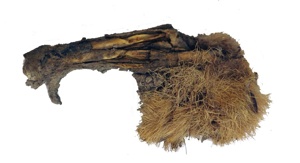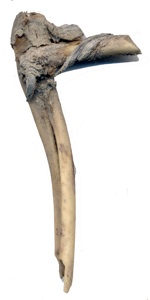Jackrabbit Processing
at Antelope Cave, Arizona
Jackrabbit Processing
at Antelope Cave, Arizona

Antelope Cave, a Virgin Anasazi site located in northern Arizona, provides a large faunal assemblage dominated by jackrabbit hares (Lepus californicus) and cottontail rabbit (Sylvilagus sp.). The animal remains at the site are significant for the high level of preservation and low impacts by non-cultural processes. The animals remains are so well preserved that it was possible to identify the history of jackrabbits from capture, to butchering, cooking, and consumption.
Here are a couple of examples of the preservation. On the left is an articulated jackrabbit forepaw with the fur, skin, and other tissue still attached. On the right is an articulated radius-ulna and humerus (the elbow joint).


This data was particularly useful in understanding the intensity of “culinary processing” by prehistoric foragers, especially those in a marginal environment like that present at Antelope Cave some 1000-1300 years ago.
Introduction
Jacob Fisher takes full responsibility for the information posted. The information on this page represents that of Jacob Fisher and not that of California State University Sacramento.
Last updated on January 5, 2011